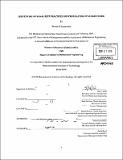| dc.contributor.advisor | Brad Morrison and Daniel Whitney. | en_US |
| dc.contributor.author | Gracewski, Travis E | en_US |
| dc.contributor.other | Leaders for Global Operations Program. | en_US |
| dc.date.accessioned | 2011-03-24T20:18:44Z | |
| dc.date.available | 2011-03-24T20:18:44Z | |
| dc.date.copyright | 2010 | en_US |
| dc.date.issued | 2010 | en_US |
| dc.identifier.uri | http://hdl.handle.net/1721.1/61866 | |
| dc.description | Thesis (S.M.)--Massachusetts Institute of Technology, Dept. of Mechanical Engineering; and, (M.B.A.)--Massachusetts Institute of Technology, Sloan School of Management; in conjunction with the Leaders for Global Operations Program at MIT, 2010. | en_US |
| dc.description | Cataloged from PDF version of thesis. | en_US |
| dc.description | Includes bibliographical references (p. 59-60). | en_US |
| dc.description.abstract | Standard work is commonly used in manufacturing and assembly operations to minimize process variation by providing detailed instruction to operators. Internal best practices are processes within the firm that achieve a more beneficial result when compared to alternative existing methods. Standard work is one approach to share best practices, and the challenge is in identifying their existence and effectively capturing the information in written documentation. Best practices are often tacit in nature, being difficult to codify and to put into writing. Effectively finding internal best practices and transferring them from tacit to explicit form as standard work is a desirable objective, improving knowledge transfer and operational efficiency within the company. There are techniques that can be applied to the standard work development process that increase the likelihood of successful best practice capture and organizational adoption. These techniques are developed and implemented through application at Sikorsky Aircraft, in creating and deploying a system of standard work titled, the "Assembly and Flight Operations Franchise Book." Major process steps in developing and sustaining standard work include an initial planning phase characterized by an upfront analysis, organizational structuring, and content framework development; and a sustaining phase characterized by a repeating cycle of best practice discovery, documentation, and sharing. | en_US |
| dc.description.statementofresponsibility | by Travis E. Gracewski. | en_US |
| dc.format.extent | 74 p. | en_US |
| dc.language.iso | eng | en_US |
| dc.publisher | Massachusetts Institute of Technology | en_US |
| dc.rights | M.I.T. theses are protected by
copyright. They may be viewed from this source for any purpose, but
reproduction or distribution in any format is prohibited without written
permission. See provided URL for inquiries about permission. | en_US |
| dc.rights.uri | http://dspace.mit.edu/handle/1721.1/7582 | en_US |
| dc.subject | Mechanical Engineering. | en_US |
| dc.subject | Sloan School of Management. | en_US |
| dc.subject | Leaders for Global Operations Program. | en_US |
| dc.title | Identifying internal best practices and propagating standard work | en_US |
| dc.type | Thesis | en_US |
| dc.description.degree | M.B.A. | en_US |
| dc.description.degree | S.M. | en_US |
| dc.contributor.department | Leaders for Global Operations Program at MIT | en_US |
| dc.contributor.department | Massachusetts Institute of Technology. Department of Mechanical Engineering | |
| dc.contributor.department | Sloan School of Management | |
| dc.identifier.oclc | 705929203 | en_US |
